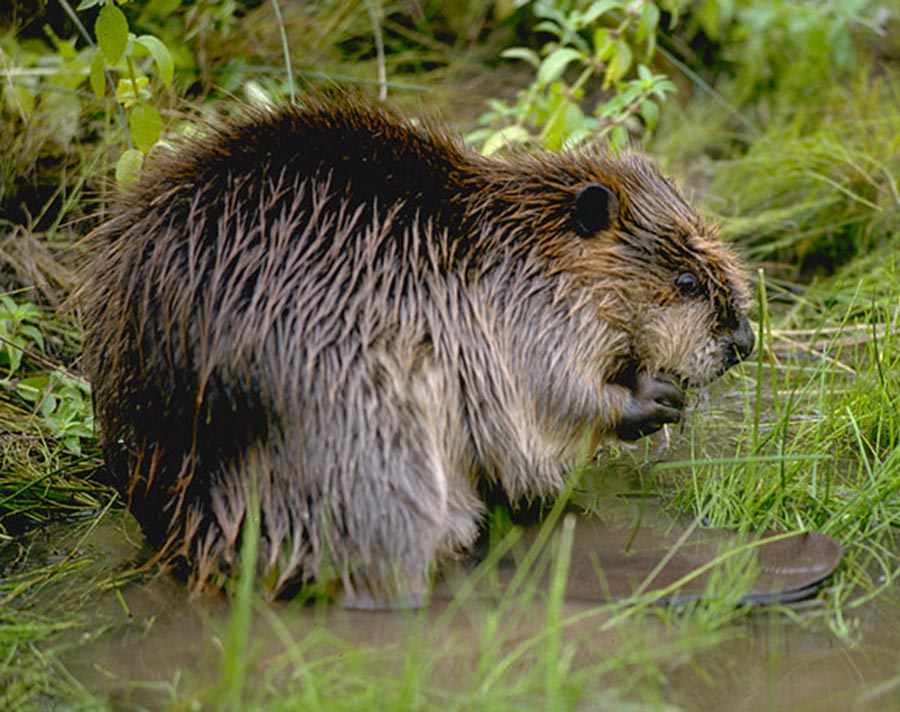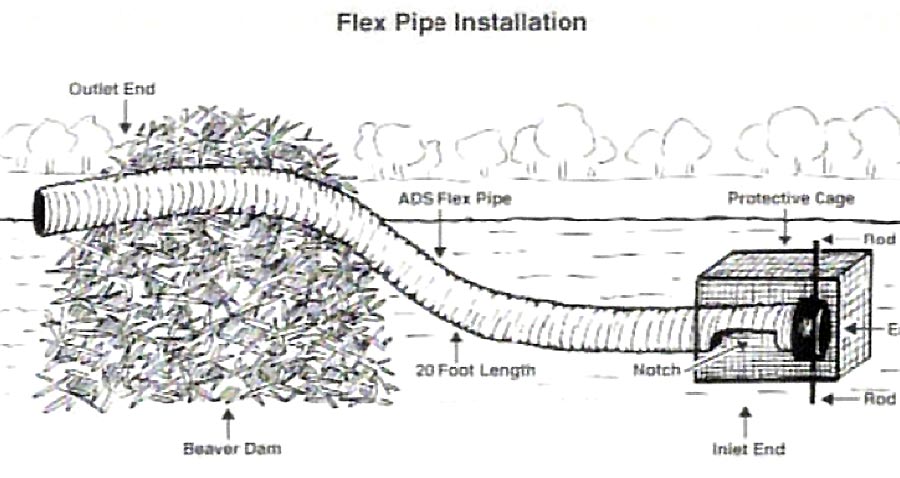Practiced in the art of deception
How we eliminate conflicts created when beavers and humans interact.
By David Lee
DWR habitat project leader
Aside from humans, I'm unaware of another species with more potential to transform the landscape around them than beavers. A wide variety of wildlife species, as well as humans, are drawn to the rich and dynamic wildlife habitats created by beavers.
Unfortunately, people who earn their living by applying water to the land, or maintaining roads around beaver habitat, are not as likely to consider beavers their friends.
That was the case when I visited a wetland mitigation site on the Jordan River in the spring of 2016. Our crew of wildlife technicians was asked to assist with the maintenance of the site. This entailed providing water to several dozen young trees that were planted the previous year, and controlling the noxious weeds found throughout the site.
Since the previous summer, a beaver family had moved into the area, attracted by the flows of a small tributary of the Jordan River. The stream runs through an adjacent business park in the south end of the Salt Lake Valley before spilling into the Jordan River. In order to access the site to conduct maintenance, we had to cross the stream using a "Texas Crossing," (a broad, concrete slab on the bottom of the creek bed that allows motorized vehicles access without the need for a large pipe installation).
The problem was that the beavers had chosen a site below the crossing to build their dam. We were able to use the crossing, but the water was so deep that everything on our trailers would get soaked every time we crossed it. Even though the resulting beaver pond was providing some fantastic wetland habitat on a wetland mitigation site, something had to be done to stop the pond from increasing in size and depth. Without intervention, the pond would eventually affect the adjacent county road and adjacent private property, hence the need for a "beaver deceiver."

DWR employees installing a beaver deceiver at a wetland mitigation site on a tributary of the Jordan River.
The beaver deceiver is a water flow control device, originally developed in Vermont, by wildlife biologist Skip Lisle. The whole idea behind the beaver deceiver is to eliminate the conflicts created when beavers and humans interact. Skip figured out that by removing the sound of running water, beavers are no longer compelled to continue building dams.
The deceiver allows for the beavers, their dams and the benefits provided by the dams, to stay on the landscape. By placing a 20- to 40-foot pipe under water and through the dam, we're effectively placing a safety valve or drain in the pond. This prevents the dam from filling completely. The upstream end of the pipe is protected by a heavy cage constructed of steel mesh, similar to that used to reinforce concrete (see diagram).
In most cases, we use black, corrugated ADS pipe. In some cases, persistent beavers chew through this soft-walled material in an effort to plug off the water they can hear running inside. When that happens, we use 8- or 10-inch schedule 40 PVC pipe as an alternative.
When installing the deceiver, placement of the drainpipe should allow for a minimum pond depth of three to four feet, as well as proper access to the beaver lodge. This is achieved by placing the drainpipe approximately three feet above the bottom of the pond on a platform of rocks or similar material. We're careful that we don't bury the pipe too deep when running it through the beaver dam, because this could drain the pond completely. Depending on the shape of the pond floor, we often place the pipe three or four feet above the bottom of the dam.

















